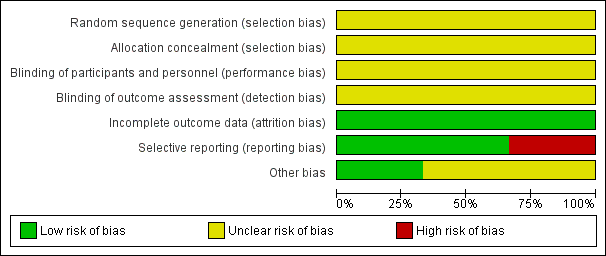Related content
Related reviews and protocols
Irina Tammenmaa‐Aho, Rosie Asher, Karla Soares‐Weiser, Hanna Bergman | 19 March 2018
Hanna Bergman, Paranthaman S Bhoopathi, Karla Soares‐Weiser | 20 January 2018
Adriano Resende Lima, Karla Soares‐Weiser, Josué Bacaltchuk, Thomas RE Barnes | 25 October 1999
Karla Soares‐Weiser, Nicola Maayan, Hanna Bergman | 17 January 2018
Hanna Bergman, Karla Soares‐Weiser | 17 January 2018
Adib Essali, Karla Soares‐Weiser, Hanna Bergman, Clive E Adams | 26 March 2018
Karla Soares‐Weiser, John Rathbone, Yusuke Ogawa, Kiyomi Shinohara, Hanna Bergman | 19 March 2018
Thomas RE Barnes, Karla Soares‐Weiser, Josué Bacaltchuk | 18 October 2004
Samer Alabed, Youssef Latifeh, Husam Aldeen Mohammad, Hanna Bergman | 17 April 2018
John Rathbone, Karla Soares‐Weiser | 18 October 2006











